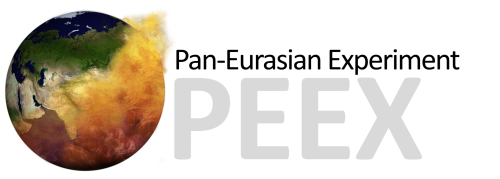Project Description
At present, better understanding of various interactions and feedbacks between Earth surface and atmosphere is required to improve climate related predictions and mitigation plans. Foremost, if the global CO2 emissions continue increasing at the current rate, we will have, within 40 years, atmospheric CO2 concentration over 500 ppm (www.esrl.noaa.gov/gmd/ccgg/trends/). This value can be considered to be critical tipping point for unpredicted behaviour of the climate and consequently of the Earth system. The Grand Challenges of the Earth, such as climate change, air quality, and water and food supply are interlinked, but current observations are fragmented. For the future aspiration, we need an integrated approach in order to understand feedbacks between different Earth components, to reduce uncertainties in climate change predictions, to improve urban air quality and to mitigate and adapt to climate change effectively.
In 2015, the United Nations General Assembly defined 17 Sustainable Development Goals (SDGs), with associated 169 targets and 232 indicators, to be achieved by the year 2030. These goals, also referred to as Agenda 2030, are a comprehensive, global effort to strengthen sustainability in its three dimensions: economic, social and environmental. To meet the SDGs, an international research framework extending from a local to global scale is needed. The goals have been officially adopted by all 193 UN member states, which signifies a commitment on meeting SDGs on all levels of governance nationally and internationally.
In Finland, we have Stations for Measuring Earth Surface – Atmosphere Relations (SMEAR), such as Hyytiälä (SMEAR II) and Värriö (SMEAR I), which support work towards SDGs. Some examples of these include Finland’s incorporation of SDG’s in national processes and policies on governmental level, commitment to the EU Green Deal and the Society’s Commitment to support Agenda 2030. Society’s Commitment refers to commitments that can be established with companies, municipalities, organizations, administration, educational institutions, local actors and individuals, and are overseen by the Finnish National Commission on Sustainable Development (sitoumus2050.fi/en/mika-on-sitoumus-#/).
To solve global challenges, we need global data. Currently, we do not have sufficient data or analytical methods to assess the progress of all SDG indicators. It has been estimated that only 45% of the indicators are supported by both data and methods, which makes it difficult to implement SDGs. Overall, we need big data to achieve SDGs and for that we need global strategies as well as practical local solutions, such as safe and effective ways to collect and store data. Comprehensive atmospheric and Earth surface observations of the SMEAR network can contribute to SDGs by providing data from different locations with varying environmental conditions including air quality, for example from Värriö Station in Finnish Lapland and Chinese megacities.
To maximize the positive contribution of atmospheric and ecosystem big data in solving the SDGs it is important to acknowledge the interconnectedness of the goals; how can we use the data as effectively as possible to achieve specific SDGs and, on the other hand, to support the Agenda 2030 as a whole? Achieving the SDGs requires careful scrutiny of the interactions between various environmental and socioeconomic aspects of the goals and the targets. The interconnectedness makes the vision of sustainable future coherent and ambitious, but there are also some related challenges it poses to the implementation of SDGs. These challenges include lack of data coverage and/or missing variables for many indicators, imbalance in capacities between countries and intertwined but mutually restricting indicators. Open Big Earth data can help to tackle these challenges by enabling collecting scientific data on regional and global scales thus supporting the scientific accuracy, timeliness and diversity of research and novel solutions related to SDGs.
The big data based on comprehensive, long-term atmospheric and ecosystem observations is essential in understanding grand environmental challenges. Reinforcing open access, comprehensive measurements and transdisciplinary methods support the work towards sustainable development in the SDG framework. The atmospheric and ecosystem data and research are most useful when studied as a part of a comprehensive approach that acknowledges the various feedback loops that take place when we scrutinize environmental, socio-economical and cultural factors as a whole. Aim of this paper is to summarize how the comprehensive atmospheric observations within the SMEAR observation network can contribute towards reaching UN SDGs from local to global scale.
Kulmala et.al. ATMOSPHERIC AND ECOSYSTEM BIG DATA PROVIDING KEY CONTRIBUTIONS IN REACHING UNITED NATIONS’ SUSTAINABLE DEVELOPMENT GOALS. Big Earth Data. https://doi.org/10.1080/20964471.2021.1936943
Please, see the special issue of Big Data in Support of the Sustainable Development Goals (Part A): A celebration of the establishment of the International Research Center of Big Data for Sustainable Development Goals (CBAS) at Big Earth Data, Volume 5, Issue 3 (2021).
Text by Joni Kujansuu, INAR, University of Helsinki
